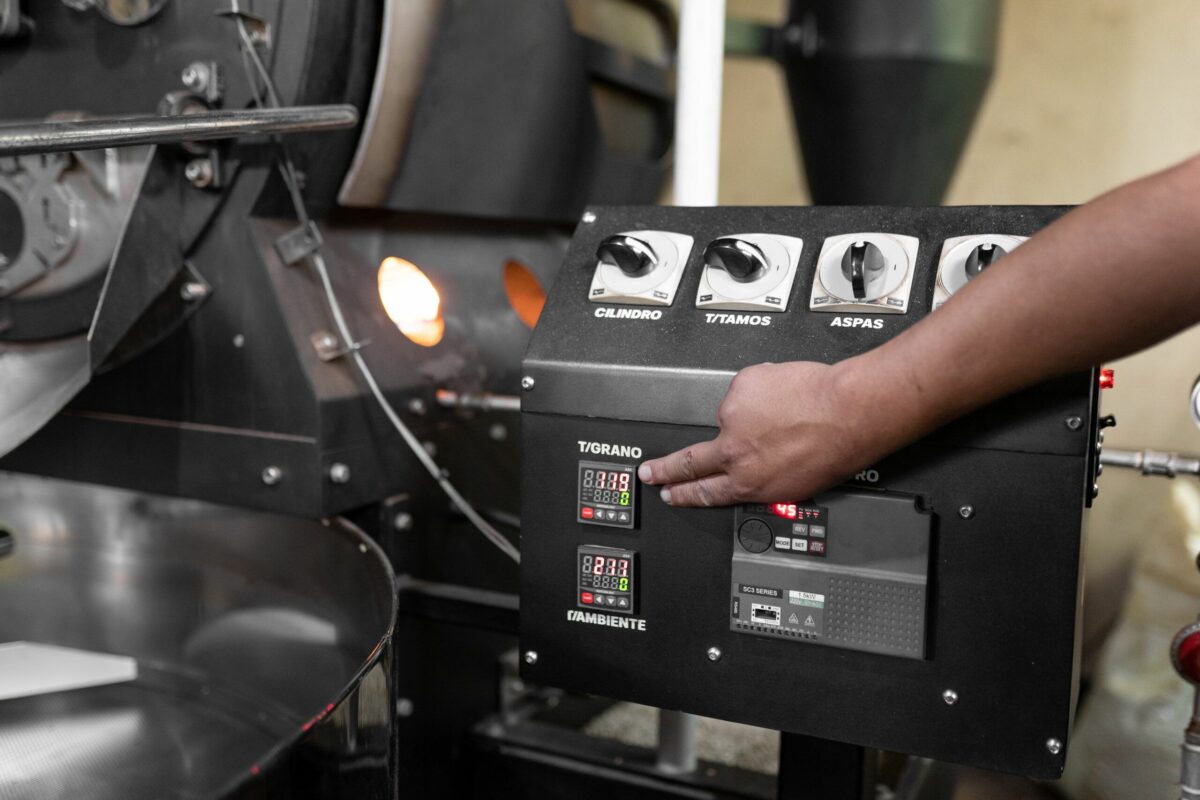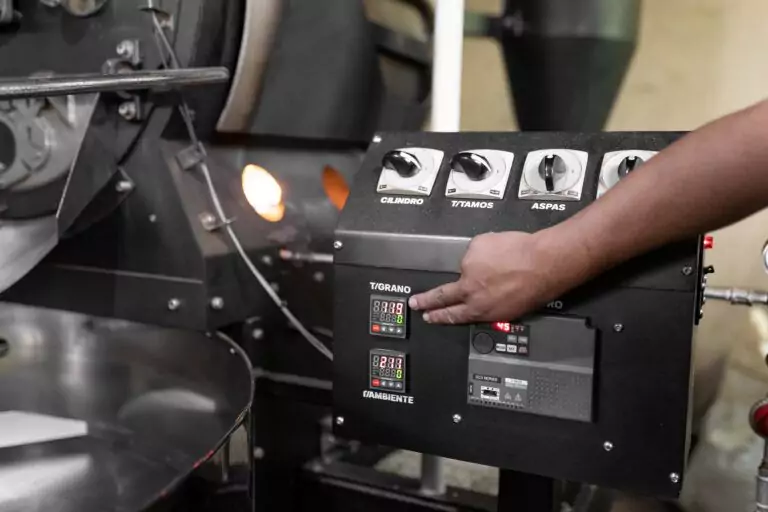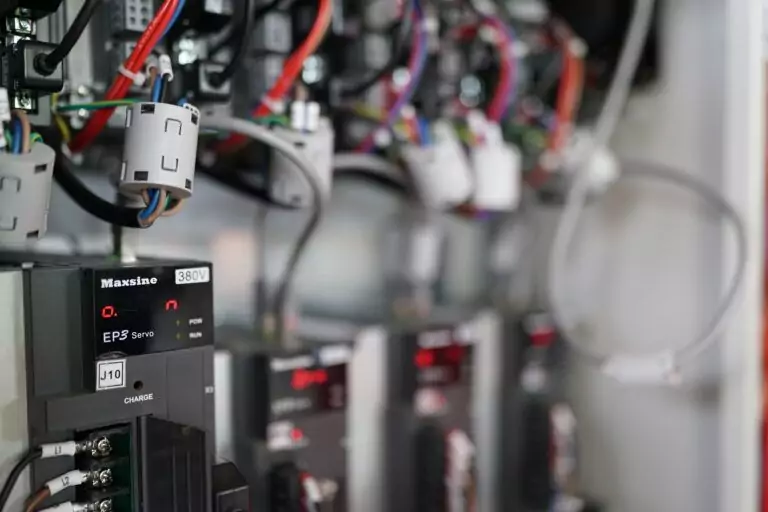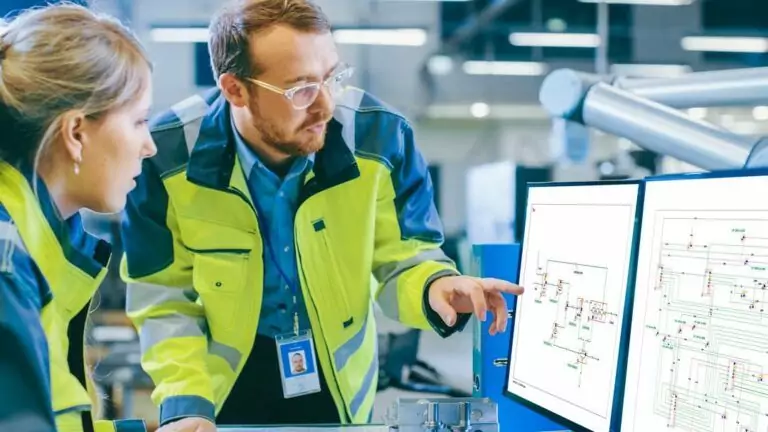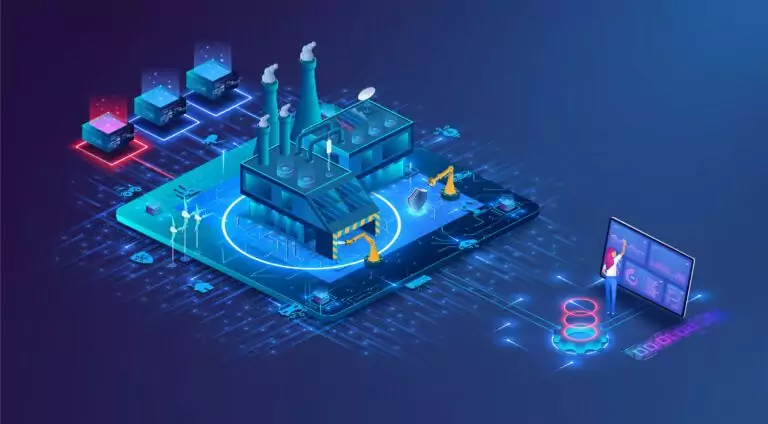Welcome to our comprehensive guide on Automation Controls! In today’s fast-paced world, the role of automation in enhancing operational efficiency, reliability, and safety across various sectors cannot be overstated. From the bustling floors of manufacturing plants to the comfort of modern smart homes, automation controls, rooted in electrical engineering principles, are revolutionizing how systems and processes are managed.
Whether you’re intrigued by the technological wizardry behind programmable logic controllers (PLCs), curious about the sophisticated networks of distributed control systems (DCS), or fascinated by the capabilities of supervisory control and data acquisition (SCADA) systems, this guide is your gateway to understanding the core components and importance of automation controls. Join us as we delve into the world of automation, exploring its critical components, including sensors, controllers, and actuators, and uncover how these systems seamlessly integrate to drive efficiency and innovation in today’s industries. Whether you’re a seasoned professional or just starting out, this guide promises to enlighten you on the pivotal role of automation controls in shaping the future of industrial, commercial, and residential landscapes—with the support of electrical engineering services specialists shaping these systems behind the scenes.
What Are Automation Controls?
Automation controls are integral components of modern industrial, commercial, and residential systems designed to manage, direct, and regulate the operations of machinery and equipment. These controls encompass a wide array of technologies, including software and hardware solutions, that enable automated or remote monitoring and manipulation of devices and processes. The primary goal of automation controls is to enhance efficiency, accuracy, and reliability while minimizing human intervention in repetitive or complex tasks.
At the heart of automation controls are programmable logic controllers (PLCs), distributed control systems (DCS), and supervisory control and data acquisition (SCADA) systems. PLCs are used for controlling machinery, DCS are often found in process industries for controlling manufacturing processes, and SCADA systems are utilized for remote monitoring and control. Together, these systems form the backbone of industrial automation, supported by multi-discipline engineering services to ensure robust implementation and system-level coordination.
Furthermore, automation controls are pivotal in implementing smart technologies in various sectors, including smart homes, smart manufacturing, and smart cities. They play a crucial role in the Internet of Things (IoT), where interconnected devices communicate and operate autonomously. By leveraging automation controls, industries can achieve higher productivity, reduced operational costs, and improved safety standards.
In summary, automation controls are the technological foundation that supports the automation of complex systems and processes. They are essential for optimizing performance, ensuring safety, and enabling innovation across a broad spectrum of applications.
Why Are Automation Controls Important in Modern Industries?
Automation controls are crucial in modern industries for several compelling reasons. Automation controls serve as the backbone of modern industries, enabling them to achieve higher efficiency, safety, and quality. These benefits collectively contribute to the sustainability and growth of businesses in an increasingly automated and technology-driven world.
Increase Efficiency by Reducing Manual Intervention
Automation controls streamline industrial processes, markedly reducing the need for manual intervention. This shift not only accelerates production but also diminishes the occurrence of errors attributable to human factors. The result is a significant boost in operational efficiency, enabling industries to meet higher production targets and respond swiftly to market demands.
Improve Safety by Minimizing Human Error
By integrating automation controls, industries can notably decrease the incidence of human error, a common factor in workplace accidents and safety breaches. Automated systems are designed to operate within defined safety parameters, reducing the risk of incidents that could endanger workers. These systems are often developed with oversight from an electrical safety engineering team, ensuring that design standards align with both regulatory compliance and operational safety goals.
Enhance Product Quality through Consistent Operations
The consistency afforded by automation controls is pivotal in maintaining high product quality. Automated systems execute tasks with precision, ensuring that every product meets the established quality standards. This uniformity is crucial for reducing waste, enhancing customer satisfaction, and upholding the reputation of brands in a market where quality is a key differentiator.
What Are the Basic Components of Automation Control Systems?
The foundation of any automation control system rests on three critical components: sensors, controllers, and actuators.
Together, these components form a cohesive system that enables automated processes to run smoothly and efficiently, tailoring operations to precise specifications and demands. Each element benefits from the precision design standards applied by an experienced integrated engineering solutions provider.
Sensors for Data Collection
Sensors are the eyes and ears of an automation control system tasked with gathering crucial data from the environment. They detect changes in physical conditions—such as temperature, pressure, and motion—and convert these into electrical signals for further processing. This capability is fundamental to the system’s responsiveness and adaptability to varying operational conditions, making sensors indispensable for accurate data collection
Controllers to Process Data
Controllers serve as the brain of the system, receiving data from sensors and determining the appropriate response based on pre-programmed logic. They assess the information to make decisions and issue commands, ensuring that the system’s actions are precise and aligned with desired outcomes. Controllers are vital for the intelligent operation of automation systems, enabling them to perform complex tasks reliably and efficiently.
Actuators to Execute Commands
Actuators are the hands that carry out the commands from controllers, transforming electrical signals back into physical actions. Whether opening a valve, starting a motor, or adjusting a machine’s position, actuators make it possible for the system to interact with the physical world. Their role is crucial in converting digital decisions into tangible movements, thereby completing the automation process and ensuring the effective execution of tasks.
How Do Sensors Function in Automation Controls?
In automation controls, sensors function as the primary data collection points that monitor and detect environmental changes. Through this process, sensors enable the system to make informed decisions and respond appropriately to varying operational conditions, ensuring the system’s performance is optimized and aligned with predefined criteria.
Detect Physical Changes
Sensors in automation controls are adept at detecting physical changes in the environment, such as variations in temperature, pressure, motion, and proximity. This detection function is fundamental, enabling the system to gather real-time data about operational conditions, which is essential for responsive and adaptive control.
Convert Changes into Electrical Signals
Upon detecting physical changes, sensors convert these changes into electrical signals. This conversion process is critical as it transforms real-world phenomena into a digital format that the automation system’s controllers can interpret and act upon. This capability ensures that the automation system can make informed decisions and execute precise actions based on accurate and timely data, thereby optimizing performance and reliability.
What Role Do Controllers Play in Automation Systems?
Controllers act as the central intelligence of automation systems, processing inputs from sensors to make informed decisions based on programmed logic. Controllers are, therefore, indispensable in bridging the gap between data collection and physical action within automated systems.
Process Inputs from Sensors
Controllers in automation systems are tasked with processing inputs from sensors, which involves analyzing the electrical signals that represent real-world physical changes. This crucial process converts raw data into meaningful information, enabling the system to accurately assess its current operational state.
Make Decisions Based on Programmed Logic
Utilizing the processed information, controllers make decisions based on programmed logic. This logic, predefined within the system, outlines the desired outcomes and operational parameters, guiding controllers in selecting the most appropriate response to the data received.
Send Commands to Actuators
Upon determining the necessary action, controllers send commands to actuators, instructing them to carry out specific tasks. These directives can range from straightforward operations, such as powering a device on or off, to more intricate adjustments that fine-tune the system’s performance. This pivotal step bridges the gap between digital decision-making and physical execution, ensuring the seamless operation of the automation process.
How Do Actuators Work Within Automation Controls?
Actuators are the dynamic force of automation controls, responsible for converting electrical signals received from controllers into physical actions. By translating digital commands into tangible movements, actuators play a crucial role in bridging the gap between software decisions and mechanical operations, thus enabling automated systems to perform a wide array of tasks in real-world scenarios.
Convert Electrical Signals into Physical Action
Actuators in automation controls are pivotal for converting electrical signals into physical action. This essential process executes the commands issued by controllers, enabling the system to interact with and manipulate the physical environment effectively. Through this mechanism, actuators drive the movement and operation of machinery, fulfilling the system’s intended tasks with precision and reliability.
Types: Hydraulic, Pneumatic, and Electric
There are three primary types of actuators used in automation controls, each with its unique advantages and suited for specific applications: hydraulic, pneumatic, and electric.
- Hydraulic actuators utilize fluid power to generate motion and force, offering high power density suitable for heavy-duty applications. They are known for their robust performance in demanding environments.
- Pneumatic actuators rely on compressed air to move parts and are preferred for their speed and cleanliness, making them ideal for operations where precision and rapid movement are paramount.
- Electric actuators convert electrical energy directly into mechanical motion and are celebrated for their precision, efficiency, and ease of integration with electronic control systems. They offer a versatile solution for a wide range of automation tasks.
Each type is chosen based on specific requirements of the application, including power, speed, precision, and environmental considerations, ensuring optimal performance and efficiency in automation processes.
What Are the Common Types of Automation Control Systems?
The landscape of automation control systems is diverse, encompassing a variety of systems designed to meet the specific needs of different industrial applications. Among these, Programmable Logic Controllers (PLCs), Distributed Control Systems (DCS), and Supervisory Control and Data Acquisition (SCADA) systems stand out as the most common types, each offering unique features and benefits.
Together, these systems form the backbone of modern industrial automation, enabling enhanced productivity, safety, and quality across various sectors.
Programmable Logic Controllers (PLCs) for Industrial Control
Programmable Logic Controllers (PLCs) are the cornerstone of industrial control systems, offering robust, reliable, and real-time control capabilities. Designed for a broad spectrum of automation tasks, PLCs are highly adaptable, making them suitable for everything from simple machine control to managing complex process systems. Their user-friendly programming environment supports flexible system design and easy modifications, establishing PLCs as indispensable tools in the modern industrial landscape.
Distributed Control Systems (DCS) for Complex Operations
Distributed Control Systems (DCS) are specifically engineered to manage large-scale, complex operations requiring precise control over various interconnected processes. DCS systems provide a high level of integration and automation by distributing control functions across multiple components. This architecture not only enhances process reliability and efficiency but is particularly beneficial in sectors like chemical processing, oil and gas, and power generation, where maintaining system integrity is paramount.
Supervisory Control and Data Acquisition (SCADA) for Remote Control
Supervisory Control and Data Acquisition (SCADA) systems play a crucial role in monitoring and controlling industrial processes across remote locations. By combining advanced data acquisition capabilities with superior control functions, SCADA systems offer operators a comprehensive view of system performance. This integration enables effective management of equipment and processes from afar, optimizing operations and ensuring safety across various fields, including utilities, transportation, and infrastructure management.
How to Choose the Right Automation Control System for Your Needs?
Choosing the right automation control system requires a careful assessment of several key factors to ensure it aligns with your operational needs and objectives. By meticulously analyzing these aspects, you can select an automation control system that optimizes productivity, enhances safety, and ensures high-quality outcomes in your industrial processes.
Assess the Scale of Operations to Match System Capacity
Assessing the scale of operations is critical in determining the right automation control system. It’s essential to understand the volume and scope of tasks the system is expected to manage. Matching the system’s capacity with operational demands ensures that the chosen automation solution can handle the workload efficiently, optimizing resource utilization without overextension or underutilization.
Consider the Complexity of Processes for System Flexibility
The complexity of the processes involved is a key factor in selecting an appropriate automation control system. A system’s ability to adapt to complex operations and accommodate process variations is imperative for long-term viability. This consideration aids in choosing a system that not only meets current process requirements but is also capable of adapting to future changes and expansions, ensuring sustained operational efficiency.
Evaluate Integration Capabilities with Existing Infrastructure
Evaluating the integration capabilities of an automation control system with existing infrastructure is essential for a smooth transition. Seamless integration ensures that the new system can communicate effectively with current equipment and software platforms, facilitating uninterrupted operations. This evaluation is crucial in selecting a system that complements and enhances the existing setup, promoting a cohesive and efficient operational environment.
What Are the Challenges in Implementing Automation Controls?
Implementing automation controls comes with its set of challenges, including the initial cost of equipment and integration, which can be substantial. These challenges, while considerable, can be navigated with thorough planning, training, and the selection of suitable technology partners.
Initial Cost Including Equipment and Integration
The initial cost associated with automation controls is a multifaceted challenge, encompassing both the acquisition of the necessary equipment and the expenses tied to its integration within existing systems. This significant financial commitment can present a considerable obstacle, particularly for smaller entities eager to embrace technological advancements.
Technical Complexity Requiring Skilled Personnel
The implementation of automation systems introduces a degree of technical complexity that demands a workforce proficient in these sophisticated technologies. From the initial setup to routine operation, the requirement for specialized expertise underscores the challenge of sourcing and retaining qualified personnel capable of navigating these complex environments.
Maintenance and Updates for System Longevity
To ensure the longevity and operational efficiency of automation controls, consistent maintenance and timely updates are imperative. This ongoing commitment to system care is essential for staying abreast of technological progress and adapting to evolving operational needs, thereby securing the automation investment’s relevance and effectiveness over time.
How Can One Overcome the Challenges of Automation Control Implementation?
Overcoming the challenges of automation control implementation involves strategic planning and resource allocation. This approach ensures that the automation system is not only aligned with the organization’s current needs but also scalable to meet future demands, thereby enhancing operational efficiency and productivity in the long term.
Proper Planning and Analysis to Anticipate Needs
Proper planning and analysis are foundational in overcoming the challenges associated with automation control implementation. This strategic foresight allows organizations to effectively anticipate future needs and adapt their automation strategies accordingly, ensuring that the chosen solution remains efficient and scalable over time.
Training and Education for In-House Staff
Investing in training and education for in-house staff is crucial for navigating the technical complexities inherent in automation systems. By equipping employees with the necessary skills and knowledge, organizations can enhance their operational efficiency and ensure the reliable management of automation controls.
Choosing the Right Technology Partner for Support
Choosing the right technology partner plays a vital role in successfully implementing automation controls. A dependable partner provides essential support, from system design and integration to ongoing maintenance and updates, ensuring that the automation solution is optimally configured for current and future needs. This collaboration is key to unlocking the full potential of automation technologies and achieving sustained operational success.
Building Smarter Systems Starts Here
Automation controls are the backbone of modern efficiency—integrating sensors, controllers, and actuators to streamline operations, boost safety, and ensure consistent quality. From choosing the right system type to overcoming implementation challenges, understanding the essentials empowers smart decision-making. With the right approach, automation becomes a catalyst for growth and innovation.
At Vista Projects, we design and implement automation control systems that align with your process needs and long-term goals. Our multi-disciplinary engineering team ensures seamless integration and scalability for efficient, future-ready operations.
Let Vista Projects help you take control—reach out today to explore your automation possibilities.
